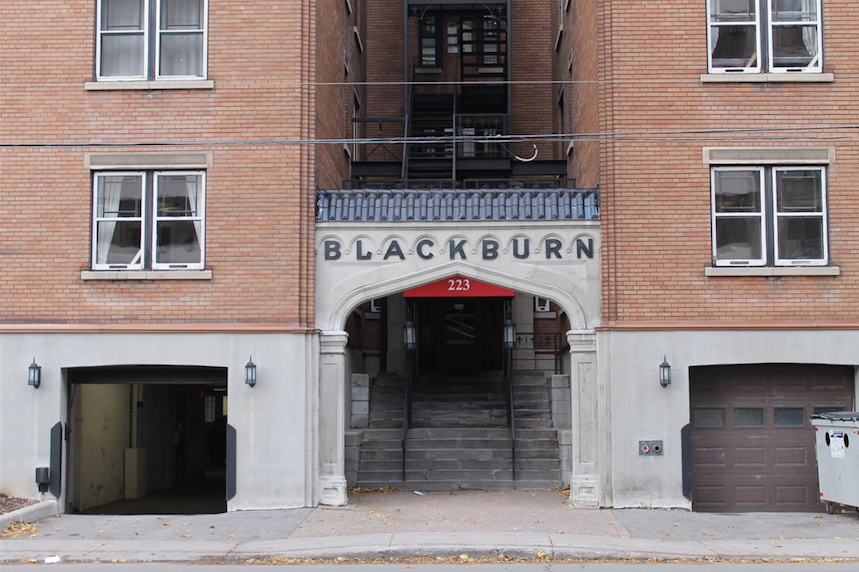Heritage Ottawa combines architecture and history for latest book
By Kiera Kowalski
A passion for architecture and history has brought together a team of apartment-loving intellectuals for Heritage Ottawa’s latest book launch.
Titled From Walk-up to High-Rise, the 80-page book looks at apartment buildings from three periods in Ottawa’s history between 1900 and 1975 in Centretown, Sandy Hill and Lowertown East.
Not only does the book look to emphasize the architectural changes throughout the decades in Ottawa, but also the social changes and social history of the city.
“Articles in the book look at some of the social pressures in Ottawa in these eras that led to many interesting constructions,” said Richard Belliveau, a member of the Heritage Ottawa board and part of the editorial team for the project.
One example highlighted in the book is the Argyle Barracks, which recall a housing crisis after the Second World War. They were built to house the Canadian Women’s Army Corps but later used as emergency housing for families.
The Argyle Barracks lived a short life and were demolished in 1950. Afterwards, the property was made available to the developers of The Tiffany, another grand dame apartment building in Centretown.
Robert Smythe, a specialist in architecture and contributor to the book, noted that “when they first appeared in Ottawa, apartment buildings were very controversial and people didn’t want to see them going up in residential neighbourhoods.”
He added, however, that “they soon became respectable.”
Famous Canadian figures such as federal NDP leader Tommy Douglas and prime minister John Diefenbaker lived in Ottawa apartments in the 1950s. Both were residents of the Strathcona on Laurier Avenue East at the same time — Diefenbaker, the conservative, lived in the right wing of the building, and Douglas, the social democrat, lived in the left.
Other apartment buildings profiled in the book include the Mayfair on Metcalfe Street, the Windsor Arms on Argyle Avenue, and the Juliana on Bronson Avenue.
Each apartment has its own detailed article in the book. There are also colour photographs of the buildings and maps detailing their locations in the city.
Belliveau noted that the project has been in the works for nearly four years and has attracted contributions from several knowledgeable lovers of historic apartment buildings.
Along with Smythe and Belliveau, the editorial team includes Susan Ross, an architect and Indigenous Studies professor at Carleton University, and Shannon Ricketts, an architectural historian.
Ross, having lived in Berlin and Montreal before moving to Ottawa, noted her curiosity about how certain housing types emerged in the much smaller Canadian capital. She joined the project in 2014 with an initial goal of collaborating with Heritage Ottawa to work on a project for a graduate seminar on heritage conservation she teaches every winter.
Ross and her team of students started with a list of 24 apartment buildings, and as more people started to show interest in the project, it grew.
She noted that it is important for this history to be documented because of the social value of the structures.
“The buildings are quite diverse, and yet we tend to not know much about their specific stories, who built them, who lived there, and what they can tell us about our changing urban lifestyles,” said Ross.
“On the whole, they have a lot of social value, as places people have lived for decades, and helping make the city a livelier place,” she added.
Ross and Ricketts will make presentations at the book launch on Dec. 13 at Dominon-Chalmers United Church, beginning at 7 p.m.
Copies of the book will also be available for purchase at the event.

